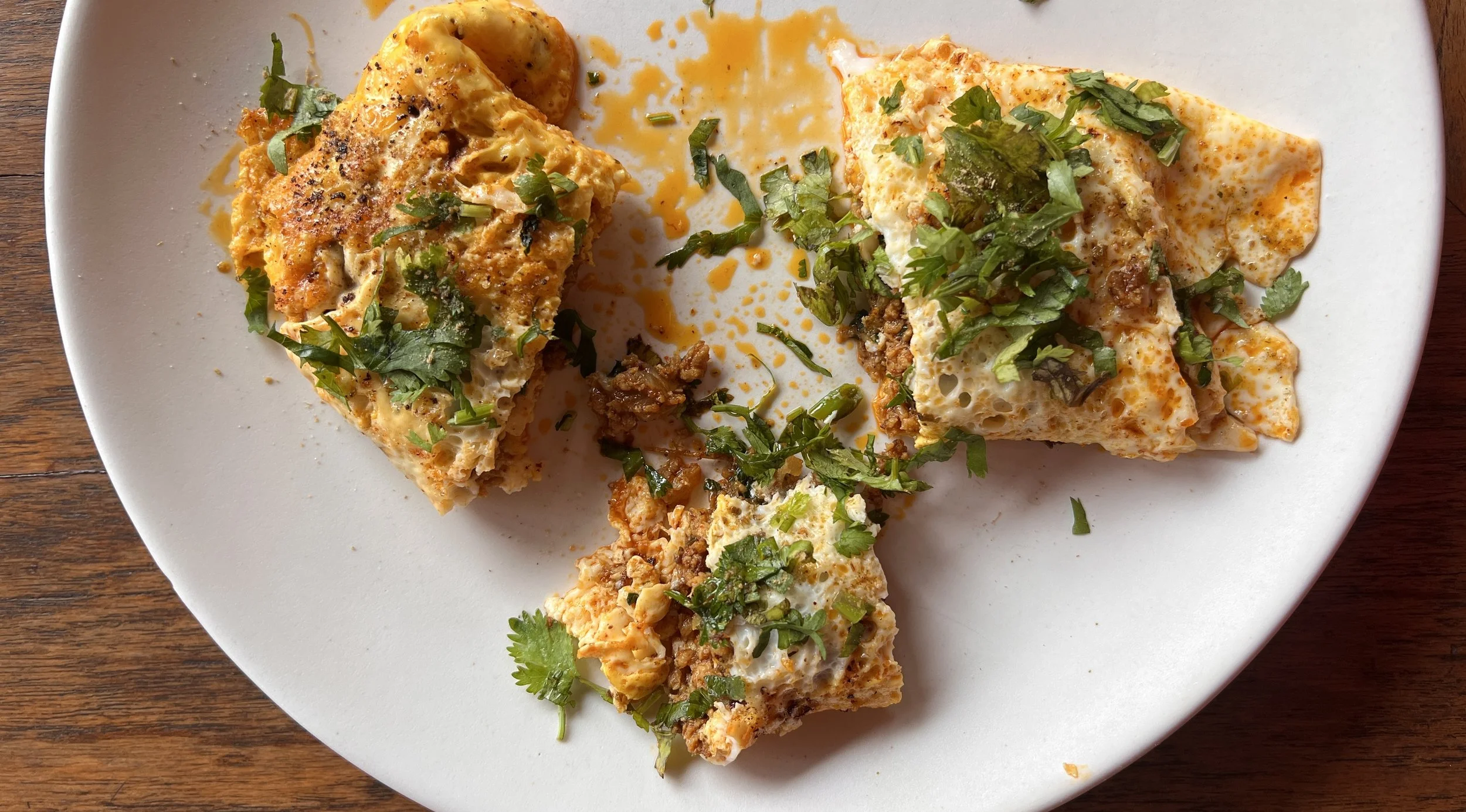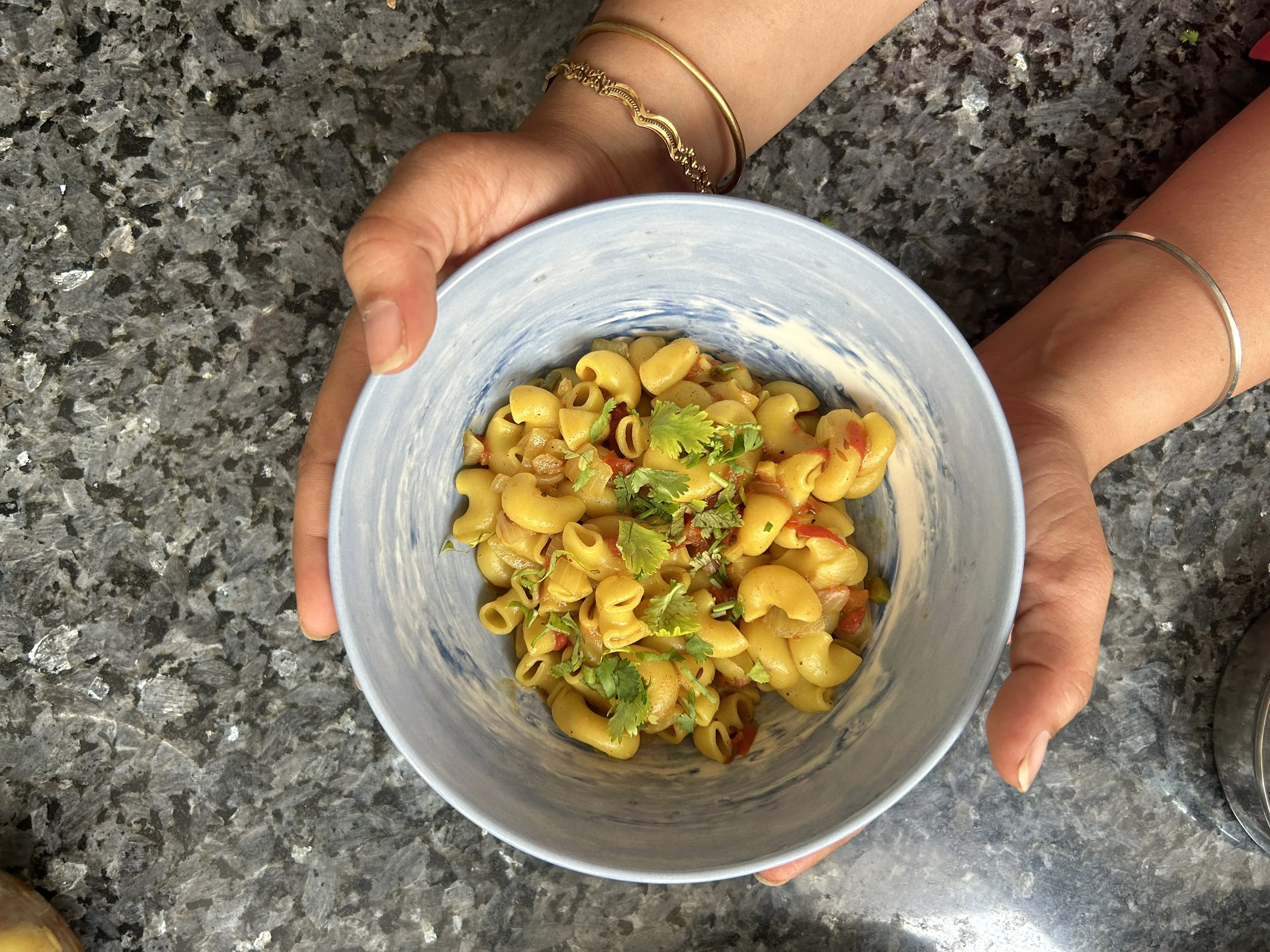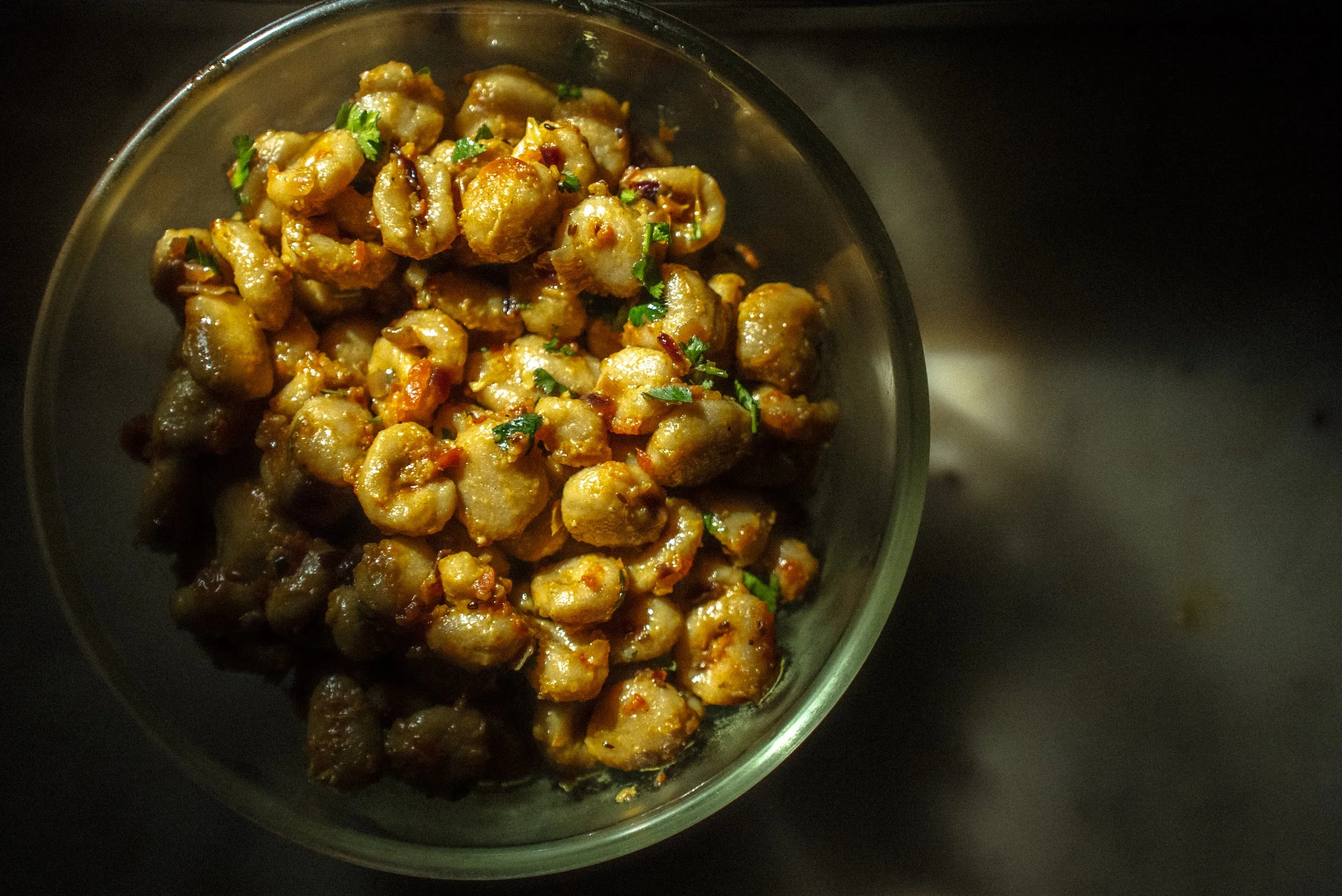The Many Layers of a Mavidikaya Kobbarayakaya Pachhadi

Pachhadis are an integral part of Telugu cuisine, and mavidikaya kobbarayakaya pachaddi, made with raw mango and fresh coconut, is sheer delight for the palate.
As the lockdown was announced in March 2020, many friends reached out to me for recipes. Many of them were trying their hands at cooking for the first time, and wanted recipes that could deliver simple and tasty meals. One of the first recipes I shared was a chutney, what we call, in Telugu, a pachhadi. Summer had brought with it a bounty of raw mangoes — all one needed was freshly grated coconut, to make a delicious pachhadi.
There are two recipes I associate with raw mango — the slightly sour mavidikaya pappu (tur dal with raw mango, tempered with garlic, cumin, red chillies and curry leaves), and the coconut-mango pachhadi. Both are sour, and can instantly light up both my palate and mood. Raw mangoes are also inseparable from the best Telugu pickles— avakai and maagai, among others.
Telugu cuisine is hot, fiery even. It is simple in its preparation, and does not use much oil or spices. But all that changes when it comes to pickles, chutneys and podis (lentils, ground with spices). Telugu pachhadis are not to be savoured with dainty dabs — they are much too hot for that. Instead, they are mixed into rice with sesame oil or ghee, like one would mix a dal or curry.
Pachhadis are typically made at home, rustled up almost every other day. The popular Telugu pickle, maagai, made of dried mangoes and spices, is transformed into a pachhadi by adding curd to it. The magaai pachhadi is a great dip for dosas, idlis, and vadas; the curd balances the heat of the pickle with its gentle sourness. Even podis can be transformed into a pachhadi.
The mavidikaya kobbarayakaya pachhadi (raw mango coconut chutney) is a dear favourite. These days I make it in a mixie, but the stone mortar that was so much a part of our kitchen in the past, yields the perfect texture. The sweetness of grated coconut, the sourness of raw mangoes, the heat of chillies (both red and green), and the final texture is what elevates this simple recipes from comfort food to the flavour and textural symphony of far more sophisticated dishes.
Mavidikaya Kobbarakaya Pachhadi ( Raw Mango and Coconut Chutney)
Ingredients
For the pachadi
Fresh coconut (half of a medium-sized coconut)
A medium-sized raw mango
4-5 dried red chillies
6-7 green chillies
8-10 fenugreek seeds
1/4 teaspoon turmeric
Salt to taste
For the tempering
1/4 teaspoon mustard seed
A pinch of asafoetida
5-6 curry leaves
1/4 teaspoon urad dal (skinned black gram)
2 dried red chillies
1/4 teaspoon chana dal (Bengal gram)
Sesame oil
Recipe
Grate the coconut. Dice the raw mango into cubes. The raw mango needs to be very sour.
Heat a little sesame oil. When the oil is hot, add whole red chillies and fenugreek seeds. Fry well. Be careful not to burn the fenugreek seeds. Remove the red chillies and fenugreek seeds from the oil and let them cool.
Now take the green chillies, raw mangoes, the fried red chillies and fenugreek seeds in a mixer bowl and blend. Add the grated coconut, a little turmeric and salt to taste and blend again. Transfer it to a bowl.
For the tempering, heat a little oil. One can use the same oil in which the red chillies and fenugreek were fried. When it is hot add mustard seeds. As the mustard seeds splutter, add a pinch of asafoetida, urad dal, chana dal, red chillies broken into pieces and curry leaves. Fry well. Add this tempering to the chutney. Mix well.
The pachhadi is now ready to be served with steaming rice.
Nishi Pulugurtha is an academic and creative writer based in Kolkata. Her works include a volume of short stories The Window Sill, a collection of travel essays Out in the Open and a volume of poems The Real and the Unreal. She can be reached at nishipulu@gmail.com
ALSO ON THE GOYA JOURNAL








